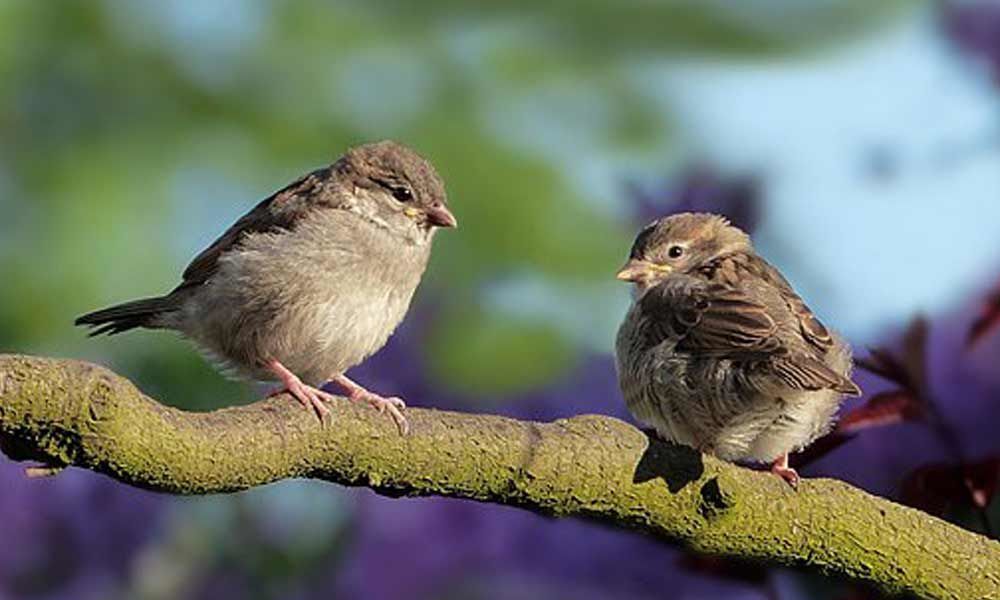Live
- ‘Drinker Sai’ appeals to both younger and family audiences: Producer Basavaraju Laharidhar
- Kerala BJP’s ‘love’ towards Christians is fake: Ex party leader
- Google Gemini Now Features PDF Screen Awareness in the Files App
- Anupama graces Vogue India’s January-February cover
- Captivating poster from ‘Shambhala’ unveiled
- DMK desperately trying to counter BJP‘s rise in TN: ANS Prasad
- Cyber Crimes Surge by 18% in 2024: Director Shikha Goel Reports
- BGT: We are seeing a master at work; I take my hat off to him, says Abbott on Bumrah
- Niranjan Reddy Slams Jupally Krishna Rao and Government Over Irrigation Incompetence
- Gardner reflects on Australia's dominant year after ODI series sweep over NZ
Just In
Hyderabad: While the diminutive bird is now a rarity in the city, it is found in large number at the Rajiv Gandhi International Airport.
M Shafaat Ullah of Birdwatcher's Society of Andhra Pradesh (BSAP) attributes the landscape, greenery and the open land with green grass on either side of the 4-km runway for the large number of birds at the airport.
Shafaat Ullah said sparrows eat grain and hardly depend on human beings for food. They are opportunistic feeders.
Sparrows may pick up bread crumbs thrown by human beings, but survive on grains and feed their young ones with insects.
With each new glass and crome building springing up in the city, open spaces are diminishing and gated communities with well laid out gardens with exotic plants do not help either.
"Well-manicured lawns are not what attract sparrows. But, they are attracted by bushes," said Shafaat.
Madan, a bird watcher, said, "Sparrows need nests and privacy. They are extremely territorial. They thrive in a rustic natural environment with bushes."
The airport with vast open spaces interspersed with an undulating landscape with a variety of trees is a haven for all kinds of birds, including sparrows.
Ravi Gupta, a photographer, said, "Birds, especially sparrows, are found in huge numbers outside the city and in a few pockets, such as Ameenpur, Medchal, Osmania University, DD Colony, Barkas and Cherlapally.
'Provide an environment, sparrows will return'
Rajini Vakkalanka has been involved in the conservation of sparrows since 2008.
She said that sparrows would come back with a little effort
"I have seen the sparrow make a comeback in our colony in Attapur.
They do come, but they need an ecosystem. We set up nests and they did return.
What was heartening was that several other birds, including Robbins, Spotted Munial and Finches, also started coming," says Rajini.
Experiment with nests bears fruit
The first time Rajini and her friends set up wooden nest boxes on balconies it took a few weeks for sparrows to come.
But, getting carpenters to make them was difficult, she admits.
After a lot of trial and error, Rajini says, sparrows get attracted to black coloured earthen pots.
The team at Citizen Action for Local Biodiversity Awareness and Conservation (CALLBAC) that Rajini formed place black earthen pots at strategic locations, but she said, "The wooden boxes are more robust and last for about 10 years."
Earthen pots secured in a bottle
In a latest initiative, an earthen pot is secured inside a plastic bottle.
Rajini said, "I am averse to the use of plastic, but felt that it would last long and either way it would have ended up in a dump yard. We are placing them in Attapur.
Awareness programme in schools
In the last six years, CALLBAC has visited several schools in the city and has also set up nest boxes in schools.
Rajini said, "Children are receptive and take part with great enthusiasm."
Recalling a recent incident, she said, "We asked students to make nests with cardboard boxes and other material and also helped set up boxes.
To our surprise, sparrows returned to the campus of Global Edge School.

© 2024 Hyderabad Media House Limited/The Hans India. All rights reserved. Powered by hocalwire.com









